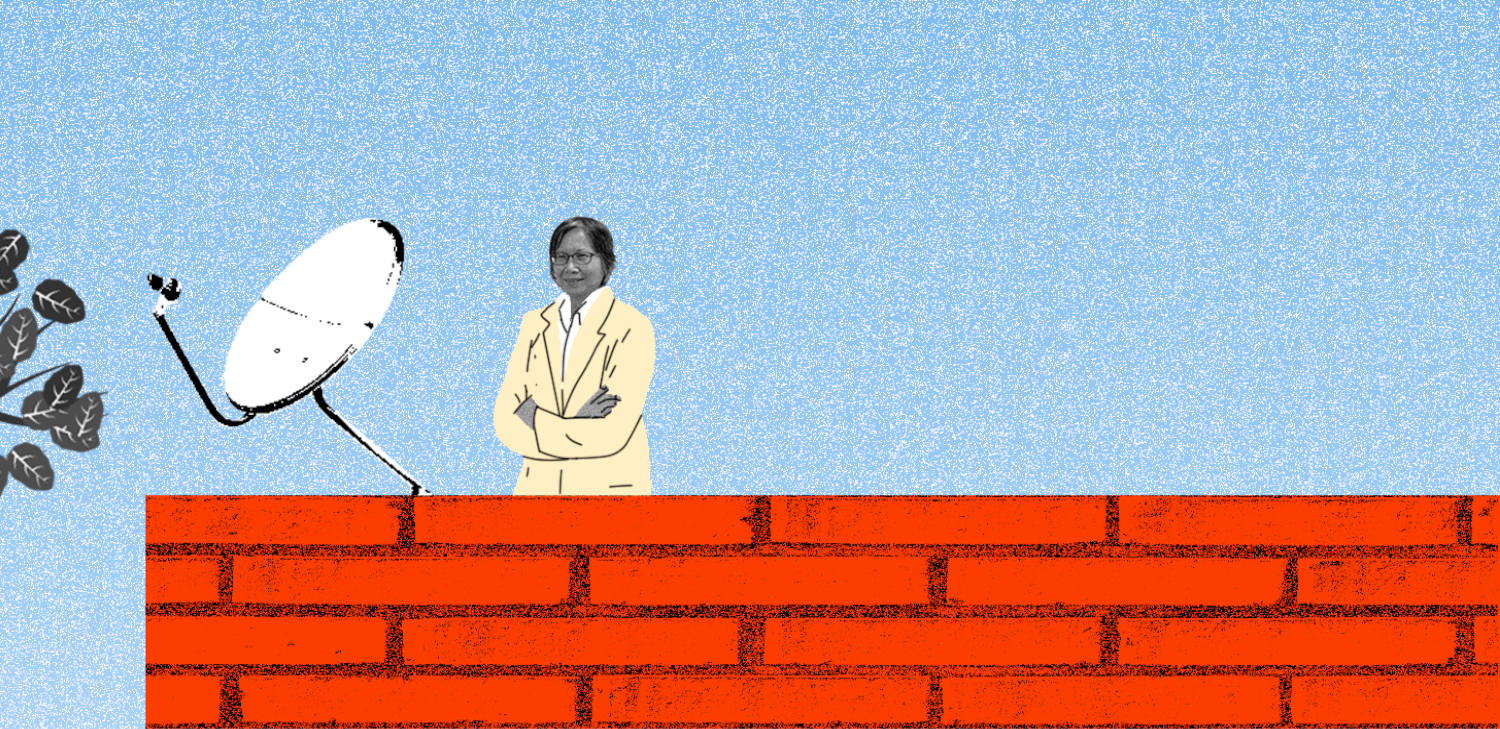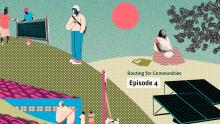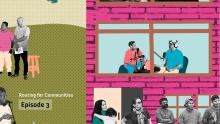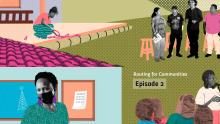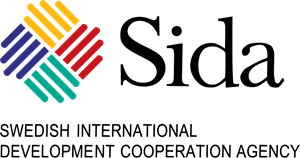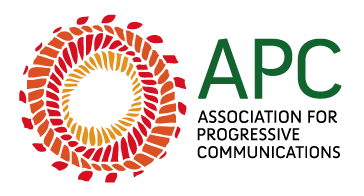#11 Thailand’s first community network connects around 500 homes
The story you’ll hear in the 11th episode of our season takes place in Thailand. We are going to learn about Professor Kanchaná Kanchanásut’s pioneering venture, which took the internet to this Southeast Asian country. Nowadays, she is in charge of TakNet, Thailand’s first community network, which connects around 500 homes in 30 communities to broadband.
Still in Asia, this time in the Philippines, we talked to John Garrity, a Filipino-American who works as policy advisor and chief of party for the USAID – Better Access and Connectivity project in this country. His work focuses on inclusive growth and policies to reduce poverty, mainly via the implementation of information and communication technologies (ICTs).
“Routing for Communities” is a 12-episode podcast. Here you will listen to the life stories of people who have come up with alternatives to overcome the challenges of digital inclusion in remote, rural and urban areas across the globe.
Stories and voices that are intertwined, connected by one thread: building internet and communication community networks.
Hello! It’s me again! My name is Renata Porto, from Brazil, and I’m the host of this 12-episode season. This podcast is about life stories of those connecting themselves while defending the fundamental rights and well-being of their communities.
The story we’ll get to know in this episode takes place in Thailand. I’m going to tell you about Prof. Kanchana Kanchanasut’s pioneering venture, which took the internet to this East Asian country. Nowadays, she is in charge of TakNet, Thailand’s first community network.
“What makes a community network different from a commercial service provider? Because with a community network, you can add on so many things that provide solutions for the community.”
Still in Asia, this time in the Philippines, we talked to John Garrity, a Filipino-American who works as policy advisor and chief of party for the USAID – Better Access and Connectivity project in this country.
“So, what we're doing here in the Philippines is we are demonstrating and implementing community networks, more to show what's possible to community groups and local government units.”
So, join me for this 11th episode of our podcast.
Routing for communities: An audio journey tracing community connectivity around the world.
Before interviews, our team always conducts production and research on the experience we will talk about, as well as on the interviewee. For this episode, there is truly a whole lot of material available online about Prof. Kanchanasut.
"My name is Kanchana Kanchanasut. I am from Thailand and I work at the Asian Institute of Technology. I used to be a professor in computer science until my retirement. So now I am working as an advisor to various research projects in this institute. I studied in Australia: my undergrad and as well as post-grad studies. I worked in this institute for more than 30 years. It’s an international institute so we got to know so many people from different countries. And I got interested in community networks because I was involved in bringing the internet to Thailand, you know, almost 40 years ago."
If you search for Kanchana Kanchanasut’s name online, you’ll soon understand the greatness behind her work. But here’s a short summary for you.
Our interviewee has a long trajectory in pioneering. After finishing her master’s degree and PhD in computer sciences at the University of Melbourne, Australia, Dr. Kanchanasut went back to Thailand to work as a tenured professor at the Asian Institute of Technology (AIT). Upon arrival, in the 1980s, she lost access to her mail-in contacts and debate groups she had through the UNIX system at the Australian university. This was a pre-internet platform used by programmers and scholars to communicate with one another.
In order to resume her participation in these virtual spaces, which were important to her research and work, she and a colleague set about developing a solution to get connected to these forums. And it worked! That’s how, in 1986, Thailand came to have its first online connection with what would be known later on as the internet. She was also the first person to create an email account in her country, besides having been the one who registered, in 1988, the internet domain .th (dot T H), which is still the official domain in Thailand.
Among the projects she leads, there are those related to taking the internet to people who have no access in her country. She is also a pioneer when it comes to community networks.
"The flooding situation in Thailand just seems to get worse day by day, and sometimes hour by hour. This particular part of Ayutthaya Province was completely dry up until just a few hours ago, and then a stop bank burst and the Chao Phraya River is engulfing these homes. It is bursting across this road here and people are now trying…"
You’ve just listened to an excerpt from an Al Jazeera piece, from October 2011, reporting the floods in Thailand then. Until January 2012, some areas were still suffering from such floods. Over 800 people lost their lives and more than 13 million were affected.
It was right after this catastrophe that TakNet began to be developed.
"I found that the connectivity in the rural areas in Thailand was still very poor, so I was working on a mobile ad hoc network, which I was aiming at in the post-disaster environment scenario. There was a big flood in Thailand in 2011. So I decided that we should try to introduce this technology to people, try to do one village, and try to introduce the idea to get the people to get to know what the internet is and not to be afraid of technology. It was in 2013. And since then, once you get started to get involved you cannot leave. So, you know, the idea of introducing community network to the village was, to me, like when I started to introduce the internet to Thailand, it was very similar in many aspects."
Prof. Kanchanasut and her team at IntERLab, the Internet Education and Research Laboratory, at the Asian Institute of Technology, created TakNet as an academic project at the end of 2012. It was supported by the Thai Network Information Centre Foundation and with initial equipment donations by the Network Startup Resource Centre.
They started working at the Thai Samakhee village, next to the township of Mae Sot, in the province of Tak, at the country’s northern border with Myanmar. The small town has a little over 52,000 inhabitants. Thailand’s total population is currently over 72 million people.
The province of Tak is formed by different ethnic groups that live in small villages in the mountains. The village of Thai Samakhee is not far from a town with access to the internet. However, in 2013, the local population still did not have access to the technology.
Access to the internet in Thailand is relatively good nowadays, in comparison to other countries in the region, like Myanmar, Cambodia and Laos. But, at that time, two-thirds of the population were still living without broadband connection.
Throughout the years, the Thai government undertook positive work, taking fibre connectivity to the main villages in the country, through posts that follow the national highways. Yet, due to social and economic disparities that also impact this nation, costs to get a private connection are still steep for many families, especially those living in rural areas.
The disparity between the rich and the poor in Thailand is quite wide. So, in the big city people are used to the internet. They have very good facilities. And the government introduced the internet in so many curricula for schools nationwide. So the children in the villages were asked to do their homework using the internet, and their parents and their family had to allow the kids to go to town, to an internet cafe. The parents were not happy about it. That was the situation before we entered the village. So once we started to introduce the network to them and then the children could stay home, that was the start of the real deployment of our community network, because the parents started to appreciate what we were doing."
At the time, around 500 homes in 30 communities were connected to broadband through TakNet. The network works through contracts with a commercial internet provider, which is then shared among some of the homes a package of technologies based on mesh protocol developed by the IntERLab called DUMBO [Digital Ubiquitous Mobile Broadband OSLR]. DUMBO is a firmware that uses the same kind of mesh technology used by a lot of community networks in order to enable sharing a Wi-Fi signal, alongside costs paid to providers for internet access. We are leaving a link about that in the description of this episode in case you want to learn more about it.
For every 20 homes, a new service is hired and redistributed, and the hotspot’s place is decided among the locals. Internet services through the community-led initiative are three times cheaper than the average regular price charged by the private sector for individual access.
The TakNet community network is built through a partnership between the local community, IntERLab at the Asian Institute of Technology, and the Thai Network Information Center Foundation [also known as NIC.th], which is a non-profit organisation focused on the development of infrastructure and internet use in Thailand using the funds gained from the .th domain registrations, which it manages.
With the expansion of the TakNet project throughout the years, a social company called Net2Home was established in 2016 by NIC.th to manage the community network. The company operates as a mix between a Wi-Fi provider and a community network operator in which both infrastructure and connectivity are offered by the social company, while the network itself works as community-wide net. In other words, the community network users agree to be part of a network in which they pay a monthly fee for technical support and the Net2Home maintenance. The company, in turn, is centred around the community needs, generating local income and jobs.
Professor Kanchana and her teammates train one or more local technicians for each village. They can earn their income with installation fees and commission if they get more subscribers.
"I believe that the concept of having the local community to build their own network, particularly for those remote villages, they should be able to decide what they want to do with their own community. They should not sit and wait for the provider to come and decide things. So, we are trying to convince people to go to this direction. Of course, we talk to government people, we talk to regulators and try to at least make them aware of the type of approach and try not to abandon community network, and try to at least, you know, make use of the concept in areas that the provider would not go into. We don’t want people to wait forever, we want to close the gap."
TakNet seeks to involve the community in terms of access to new technologies, from introducing the internet to their elders and adults to offering job opportunities for their youth.
"I think for different countries you have different priorities. For us, in 2013, infrastructure was one of our main priorities, but right now it's become less important. So, what we are looking at right now is what we call value-added. We try to look at what makes a community network different from a commercial service provider. Because with community network, you can add on so many things that provide solutions for the community."
Thus, we say goodbye to Thailand and travel to the Philippines, in the same Southeast Asian region.
"Hi. Hello, John.
Hi Vivian, how are you?
I'm fine, and you?
Good. Good evening over there. Is it like nine o'clock?
Nine o'clock, exactly. And in the Philippines, it's like 8 a.m.?
Yeah, 8 a.m.
So good morning to you."
Thanks.
John Garrity spoke to our team directly from Manila, the capital of the Philippines, where he lives. He is a Filipino-American. His work focuses on inclusive growth and policies to reduce poverty, mainly via the implementation of information and communication technologies, known as ICTs.
"My name is John Garrity. I am the chief of party for a USAID-funded project. So, USAID, of course, is the Agency for International Development from the United States, and USAID here in the Philippines has funded a project called Better Access and Connectivity, or BEACON for short, in the acronym. So I'm on the implementing side. I'm not a USAID employee and I don't speak on behalf of the US government. But the BEACON project is a five-year project that's focused on providing primarily the government of the Philippines technical assistance in expanding digital infrastructure across the country. So that includes a lot of engagement with the national government, on some of the flagship initiatives around the national broadband plan, the national fibre backbone, but then also working at a provincial and local government level and then also with civil society organisations and cooperatives. And so that's really where our work on community networks is focused on."
The work conducted by the BEACON project in the Philippines involves communities, government offices, as well as the private sector. It is also structured around three main pillars: improving infrastructure for digital connectivity, strengthening ICTs policies and regulatory agencies, and improving technical skills for cybersecurity.
The Philippines is an archipelago of over 7,400 islands in Southeast Asia, with a population of approximately 110 million people. In terms of connectivity, the latest government surveys show that half of the country’s population does not have access to the online world. The reason being, in part, because there is no development of the private sector of internet providers in many parts of the country, where there is no commercial interest, and implementation costs are too high. The high prices of data services and devices are another barrier faced by the population.
Another issue is that the Philippines has a restrictive political environment when it comes to allowing organisations to enter their market and offer internet services. The country is one of the only nations in the world, if not the only one, where in order to have a licence to provide internet access, a company needs approval from the National Congress.
"So, what we're doing here in the Philippines is demonstrating and implementing community networks, more so to show what's possible to community groups and local government units, right? And so, you know, of course the whole definition of community networks really depends on who you talk to; but in our context, at least with the work that we're doing, you know, we view community networks as really a community-driven, community-managed network deployment, that's really participatory, that's multistakeholder, community-led."
John says that, before moving to the country, he had heard of one or two community-led experiences, but that along with more than two years, new experiences were coming up, being discovered, and promoted. Some of these are developed with high schools, as well as fishermen’s and farmers’ co-ops, which are numerous in the country.
In our talk with John, it was possible to understand a fundamental reason why guaranteeing internet access to Filipinos is so important. He explained that a significant part of the population has left the country seeking job opportunities and approximately 10% of their gross domestic product (GDP) comes from money sent by these emigrants living abroad.
"It's a major phenomenon in the Philippines, you know. Like for example, my family, my mother has eight brothers and sisters and seven of them emigrated to work overseas, right? As nurses, doctors, etc. So, there's a lot of that sort of fragmentation in families and in society because of the sheer number of Filipinos working overseas. So certainly, one aspect of trying to connect more individuals to the internet is their ability to maintain relationships with their family and that's something that, you know, we hear about a lot when we're working at a community level, like, 'Okay, now we can use Messenger more often,' so they can communicate with their loved ones."
As you may have noticed, Thailand and the Philippines, though both in the same region, Southeast Asia, have very distinct realities in terms of connectivity. But in these two experiences, there is the certainty that the development of community-led projects is essential to guarantee the online presence of most of their populations, including those who are frequently marginalised.
And this is the end of the 11th episode of our season. As always, I hope the stories that were told by voices from different parts of the world were a source of learning and hope. And that the initiatives shared in this podcast lead us to act, together and collectively.
If you want to know more about TakNet, Net2Home and IntERLab’s research, as well as the USAID BEACON project, check out the links we left in this episode’s description.
If you’ve liked this podcast, please recommend it to those you know will appreciate it as well.
You can follow the season on the main podcast platforms or on APC’s website: routingforcommunities.apc.org.
We’ll meet again soon, with new experiences and stories from community-led networks that are also connected to our lives.
In this season’s final episode, we will travel back to Africa. Over there, you will get to know community-led experiences at ALIN, Arid Lands Information Network, in Kenya, a country that is making progress when it comes to their connectivity regulatory environment.
You listened to the 11th episode of “Routing for Communities: An audio journey tracing community connectivity around the world”. This is the podcast of the Local Networks initiative, a collective effort led by APC and Rhizomatica. Production: Rádio Tertúlia.
Thanks, and see you next time!
Credits
This podcast is an initiative from the Association for Progressive Communications (APC) and Rhizomatica, produced by Rádio Tertúlia.
Script, production: Vivian Fernandes
Presentation: Renata Porto
Editing and sound: Beatriz Pasqualino
Coordination: Beatriz Pasqualino and Débora Prado
Consulting Board: Flavia Fascendini, Kathleen Diga, Cynthia El Khoury, Bruna Zanolli, Nils Brock, Adrián López and Daniela Bello
Illustrations: Gustavo Nascimento
Web design: Cathy Chen and Avi Nash
